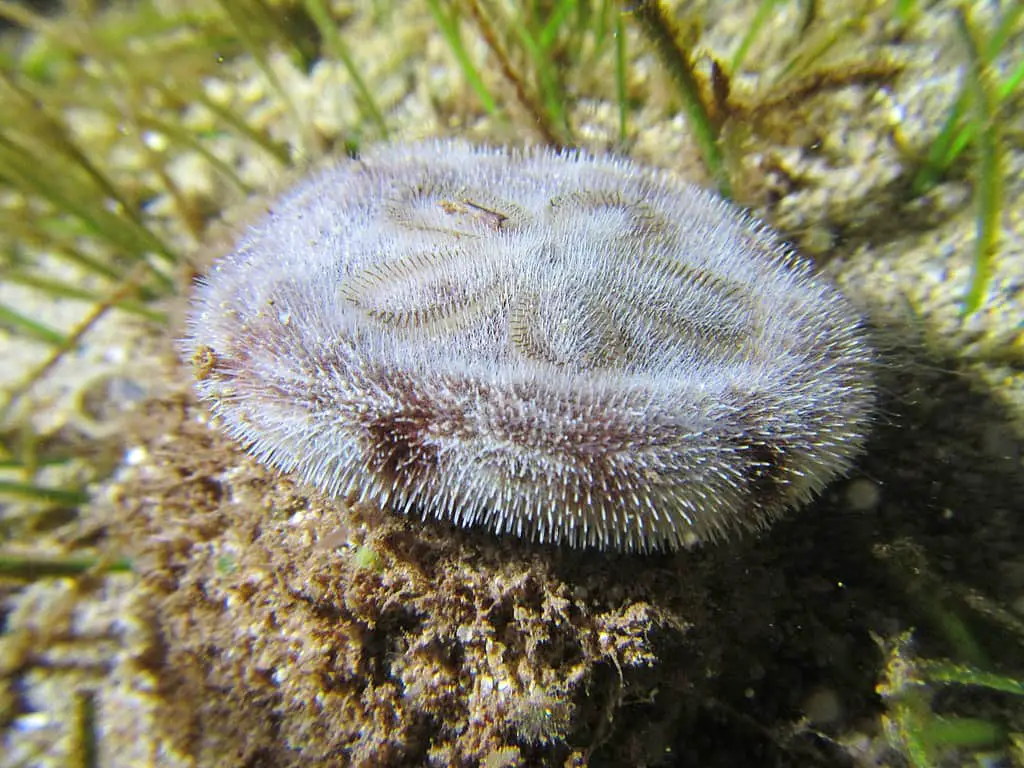Why Are Sand Dollars Called Sand Dollars? (Explained)
Sand dollars are species of flat, burrowing echinoids that belong to the order Clypeasteroida. They are related to sea urchins, sea stars, or sea cucumbers. When I found one myself for the first time, I thought they were just beautiful shells on the beach.
As I found out later, they’re actually living creatures, called sand dollars. Immediately I had a lot of questions and one of them was: ‘why are they actually called like this?’ In this post I’ll talk all about that but let’s begin with a quick answer:
Sand dollars are called sand dollars because of their flattened, silver-white skeleton appearance often found in the sand. In the past, first beachgoers found them washed ashore and they reminded them of a large silver dollar, such as the old American or Spanish dollar. Back then, people used only coins.
However, this certainly doesn’t tell the whole story. Below I’ll explain the reason why we call them sand dollars and the legend about their name. Furthermore, I’ll explain other names for these marine creatures that are used in different regions, and if sand dollars are actually worth any money. Read on!
The reason we call them sand dollars
“Sand dollar” term comes from dead sand dollars’ skeleton appearance. Their skeletons, called “tests”, are large circular, flat discs. They are dark green or purple in color when alive but when they die, they are being bleached by the sun. This is why we usually find them in white-silver color on the beach. If you’re interested in what’s the difference between a dead and alive and a dollar, you can read my other blog post here.
A way back when the first discoverers found them washed ashore, they reminded them of a large silver dollar, such as the old American or Spanish dollar, known also as “the piece of eight”. This coin had approximately 28 mm (1.5 in) diameter which is a pretty big size for a coin and makes it almost as big as sand dollars are. Back then, people used only coins for dollars.

The story of the Spanish dollar is actually very interesting as it was the most popular currency during the British colonization times in North America. Spanish coins were preferred over other currencies because of their patterned edge. This prevented dishonest traders from shaving slivers off of the coins without being detected.
Cutting money in those ages wasn’t illegal. It was even expected to make an exchange. People would literally cut the coins into eight pieces and this is why the Spanish dollar was called a “Piece of Eight”.
The legend
What’s interesting, there are many legends about these creatures and one of them tells about their name’s origin. The legend says that mermaids or the people of Atlantis used sand dollars as their currency. When they accidentally dropped their coins, they were washed ashore on stormy nights.
Other names for sand dollars
Sand dollars are non-harmful, pretty popular and unique animals so they’ve gotten other names as well. In South Africa for example, they are called pansy shells because of their five-petaled flower on their tests. This flower shape is actually known as petaloid ambulacra or petaloids and it’s a series of tiny holes or pores.
They allow respiratory tube feet to emerge from their skeleton, which they use to move and eat. These tube feet lay within the grooves and assist with the exchange of oxygen. So, this pattern that makes these animals so unique actually helps them to breathe. If you want to read more about what the life of a living sand dollar looks like, you might find my other blog post interesting.
A popular species in the Caribbean is Clypeaster rosaceus. This sand dollars is known as a fat sea biscuit because of its thickness. In New Zeleand they call them sea cookies or snapper biscuits. Other names for sand dollars are sand cakes, and a cake urchins.

Are sand dollars worth any money?
Even though their name suggests otherwise, they have very little value in terms of money. You can often find them in tropical regions on the beach for free when they were washed away by strong currents and tides. You may also see sand dollars’ skeletons being sold in souvenir shops for around $1-5 for decoration purposes or crafts. There are also a lot of other legends about sand dollars that make people want to buy them.
One legend says that if you open sand dollars’ skeleton, the five doves will fly out which is a symbol of peace and goodwill. The doves are actually their teeth with a V shape that detach after they die. A good story or a legend always brings up the value 😉 You can find the full legend here.

Fossils however may be worth a bit more. Fossils are remains (or traces) of ancient animals. They can preserve entire organisms or small parts by natural processes. The price depends on how old the fossils are and may vary between $12 and $100. Some of them come from Jurassic, Eocene, and Pliocene Ages.

You may also like:

Welcome to Bubbly Diver!
I’m glad to see you here. This blog is created for all marine creature lovers by a bubbly diver - me, Dori :)


